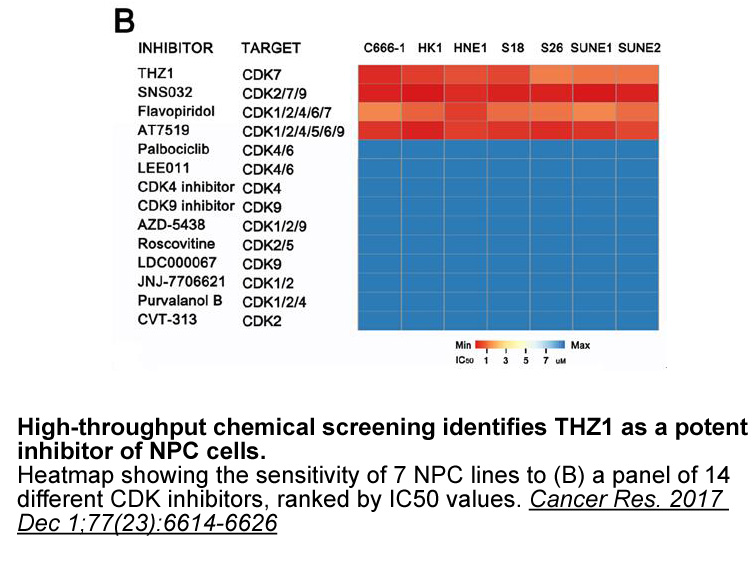Archives
In this study in an effort to explore the
In this study, in an effort to explore the possible role of 5-HT6 receptors in mediating the memory-enhancing effects of YL-0919, we first assessed the memory-enhancing effects of YL-0919 in the Morris water maze, object recognition test and step-down passive avoidance task. In addition, we then investigated the target profile of YL-0919 with the 5-HT6 Chelerythrine Chloride mg using radioligand binding assays, [35S]-GTPγS binding and cAMP stimulation assays. Finally, we examined whether blocking the 5-HT6 receptor with a selective 5-HT6 receptor antagonist affected the memory-enhancing behavioural effect of YL-0919.
Materials and methods
Results
Discussion
The data from the present study suggest that YL-0919 displays significant memory-enhancing activity in the novel object recognition, Morris water maze task and scopolamine-induced deficit in the passive avoidance task. Furthermore, we investigated the target profile of YL-0919 and found that YL-0919 displayed full 5-HT6 receptor agonist properties. Moreover, the memory-enhancing activity of YL-0919 was completely reversed by co-administration of a non-active dose of the 5-HT6 receptor antagonist SB271046 (Svenningsson et al., 2007). These data are the first to indicate that YL-0919 exerts a clear memory-enhancing effect which may be at least partially mediated by 5-HT6 receptor activation.
The novel object recognition task, the Morris water maze task and scopolamine-induced cognitive impairment are highly validated tests for recognition memory that are widely used for testing the efficacy of memory-enhancing compounds (Anderson et al., 2004, Grayson et al., 2007, Laczo et al., 2017, Lee et al., 2017, Schoenfeld et al., 2017, Weon et al., 2016). Using these models, we found that, similar to DNP (5 mg/kg), subchronic treatment with YL-0919 at a dose similar to that used for its antidepressant effects (Chen et al., 2013), had a memory-enhancing effect, but vilazodone (a partial 5-HT1A agonist and SSRI) had no such effect at the doses producing antidepressant effects (Page et al., 2002, Li et al., 2017). By using the scopolamine-induced avoidance memory-retention impairments in the passive avoidance task, we found that YL-0919, but not vilazodone, consolidated memories and reversed the avoidance memory impairment induced by scopolamine, indicating that the 5-HT6 receptor may be involved in its memory-enhancing effect.
As 5-HT6 receptor has emerged an interesting drug target to improve memory, we detected the effect of YL-0919 on 5-HT6 receptors and determined whether the 5-HT6 receptor mediated the memory-enhancing effects of YL-0919.
Using a previously characterized selective 5-HT6 receptor radioligand, we confirmed that YL-0919 has high affinity for both recombinant and native human 5-HT6 receptors. [35S]-GTPγS binding showed that the maximal efficacy of YL-0919 was 99% of that induced by WAY208466 (a full 5-HT6 agonist). These results suggest that YL-0919 is a full agonist of 5-HT6 receptors.
The 5-HT6 receptor has been widely described as a GPCR that couples to Gsα and positively stimulates adenylate cyclase activity, indicating that upon agonist activation cAMP formation is increased (Kohen et al., 1996, Ruat et al., 1993). By using a HeLa cell line stably expressing the 5-HT6 receptor, it was shown that the concentration-dependent stimulation of cAMP formation by YL-0919 was uncompetitively antagonized by SB-271046. Moreover, SB-271046 inhibited the YL-0919 stimulation, shifting the concentration response curve to the right in a concentration dependent manner with suppression of the maximal response, consistent with uncompetitive antagonism. Taken together, these data further suggest that in this assay, YL-0919 behaves as a 5-HT6 receptor agonist.
Since YL-0919 is described as a 5-HT6 receptor agonist, it posits the intriguing question of whether the memory-enhancing effects of YL-0919 depend on the stimulation of 5-HT6 receptors (Karila et al., 2015, Pereira et al., 2015). The 5-HT6 selective antagonist SB271046 at a single i.p dose of 10 mg/kg has been reported to have no effect on antidepressant behaviours (Svenningsson et al., 2007). Furthermore, our preliminary studies showed that SB271046 at a dose of 10 mg/kg caused no change in several behavioural models. In the current study, after concomitant SB271046 administration with YL-0919, we observed complete blockade of the memory-enhancing activity evoked by YL-0919 in the above mentioned three behavioural tests. These results are consistent with the above-described studies in which stimulation of cAMP formation by YL-0919 was markedly blocked by SB271046. In addition, our data are in agreement with previous data indicating that E−6801, another 5-HT6 agonist, also reversed the cognitive deficits induced by scopolamine (Kendall et al., 2011). Combining these studies, the findings indicate that the memory-enhancing effects of YL-0919 treatment might be mediated by 5-HT6 receptor stimulation.
antagonist SB271046 at a single i.p dose of 10 mg/kg has been reported to have no effect on antidepressant behaviours (Svenningsson et al., 2007). Furthermore, our preliminary studies showed that SB271046 at a dose of 10 mg/kg caused no change in several behavioural models. In the current study, after concomitant SB271046 administration with YL-0919, we observed complete blockade of the memory-enhancing activity evoked by YL-0919 in the above mentioned three behavioural tests. These results are consistent with the above-described studies in which stimulation of cAMP formation by YL-0919 was markedly blocked by SB271046. In addition, our data are in agreement with previous data indicating that E−6801, another 5-HT6 agonist, also reversed the cognitive deficits induced by scopolamine (Kendall et al., 2011). Combining these studies, the findings indicate that the memory-enhancing effects of YL-0919 treatment might be mediated by 5-HT6 receptor stimulation.